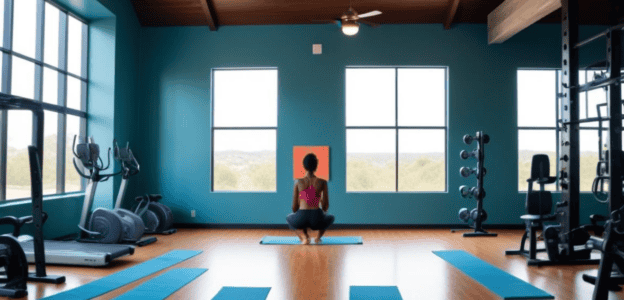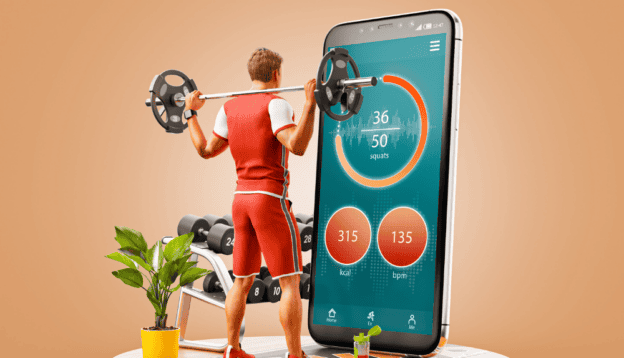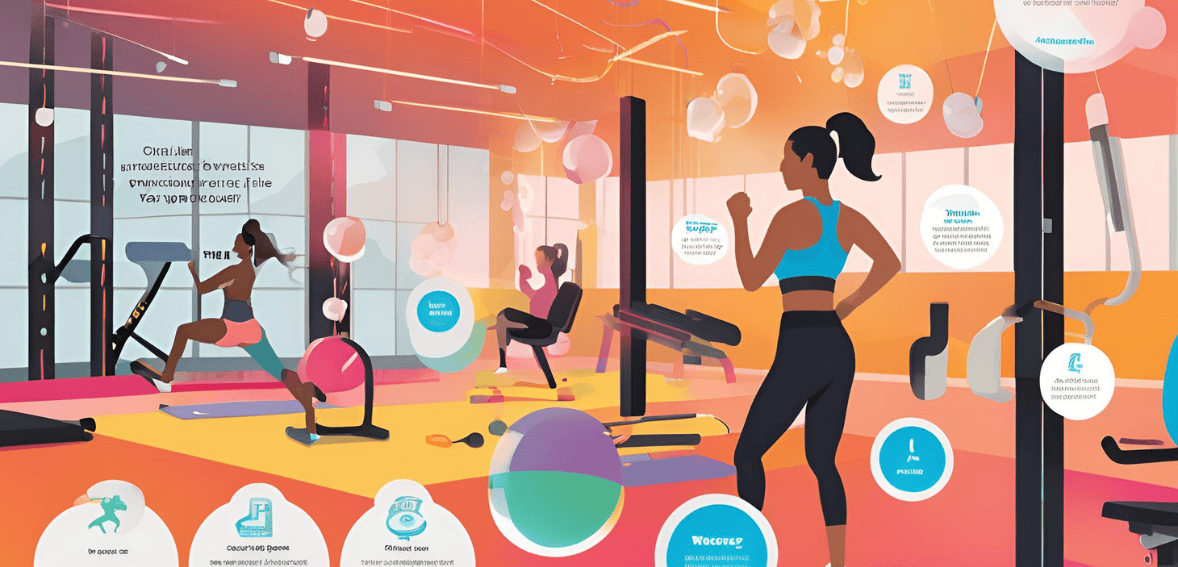From the beginning, people viewed gyms as simple facilities where one can partake in workouts and sports activities made to work on their physiques. However, this is changing. The idea of wellness, which includes physical, mental, emotional, and even spiritual health, has now taken center stage in society. The modern fitness center is now adding a wide range of wellness services to their offerings. Fully adopting this holistic way of looking at things means working with different health professionals.
This fosters community, creating a strong emotional connection between your clients and your business. This ensures continuing patronage, as they turn to you for further assistance, motivation, and inspiration. This article is focused on services, designs, and strategies that transform gyms into facilities that serve the complete person: the body, mind, and spirit.
Why a Wellness Hub?

Integrating a comprehensive wellness model into your business can set you apart. People are in pursuit of their optimal life, and offering a variety of wellness services under one roof positions you as a crucial ally in their journey. Evolving from a basic gym to a holistic wellness center communicates a commitment to support your customers holistically.
Rows of weights, treadmills, and a focus on strength and cardiovascular fitness training largely defined the traditional gym of decades past. However, consumer behavior is shifting toward a more holistic perspective on health—one that recognizes the interplay between physical fitness, mental clarity, nutrition, and overall lifestyle. Today’s health enthusiasts look for environments that offer stress relief, personalized wellness plans, nutritional guidance, and opportunities for community connection.
This paradigm shift is not just a trend; it’s a response to growing research that confirms the benefits of holistic health practices. Mental well‐being, for instance, plays a significant role in recovery, motivation, and performance. As such, modern facilities are increasingly integrating activities like meditation, yoga, and mindfulness training to support mental as well as physical health. As a facility owner, this transformation offers you the opportunity to create a dynamic, all‐inclusive space that meets the evolving needs of your clientele.
Defining a Holistic Wellness Hub
Before diving into the “how,” it’s essential to define what a holistic wellness hub truly means. At its core, a wellness hub is a space that supports multiple dimensions of health, including:
- Physical Health: Exercise, strength training, cardiovascular workouts, and recovery therapies.
Mental and Emotional Well-Being: Meditation sessions, stress management workshops, counseling, and mindfulness classes.
Nutritional Guidance: Diet consultations, cooking classes, and nutritional workshops.
Community and Social Engagement: Group activities, wellness seminars, and opportunities for networking and support.
By broadening your services to cover these areas, you create an environment where members can pursue their goals in an interconnected and sustainable way. This comprehensive approach not only leads to better long-term outcomes for your members but also differentiates your facility in a competitive market.
Assessing Your Current Facility and Market
The first step toward transformation is a thorough assessment of your current facility and an understanding of your target market. Ask yourself:
What services are currently offered, and what is missing?
Perhaps your gym already has a solid lineup of fitness classes but lacks nutritional advice or mindfulness sessions.
Who are your current members, and what are their aspirations?
A survey or focus group can reveal valuable insights about the additional services your clientele desires.
Who is your competition?
Research local wellness hubs, yoga studios, and nutrition centers. Identify gaps in their offerings that you can fill.
By gathering and analyzing this information, you can design a transformation plan that aligns with both your business strengths and the emerging needs of your community.
Redesigning Your Physical Space for Holistic Well-Being
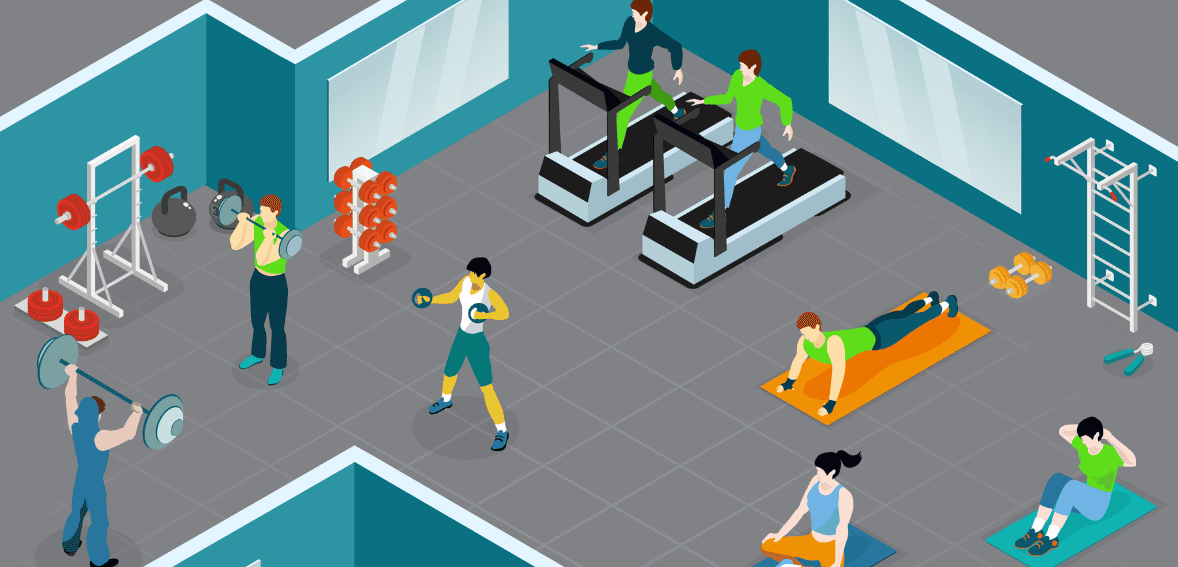
A holistic wellness hub requires a thoughtful redesign of your existing space. This process involves more than just adding new equipment—it’s about creating environments that encourage diverse wellness practices. Here are some key design elements to consider:
1. Multi-Purpose Areas
Create areas that can serve multiple functions. For example, a large open room can be used for yoga classes in the morning, transformed into a seminar space for nutrition workshops in the afternoon, and serve as a community gathering space in the evening.
You should also design distinct zones within your facility. A quiet area dedicated to meditation and mindfulness can be separated from high-energy training zones by using partitions, soft lighting, or even greenery. This helps to psychologically cue members into the type of experience they can expect in each area.
2. Adding Natural Elements
Studies have shown that exposure to natural elements can reduce stress and improve overall well-being. Consider integrating natural materials such as wood and stone, as well as plenty of indoor plants, into your redesign. Large windows that let in natural light and views of nature can also help create a more calming environment.
Additionally, using essential oils or scented diffusers in relaxation zones can enhance the sensory experience, making the space feel more inviting and tranquil.
3. Modern and Adaptive Equipment
Integrate equipment that can track progress and provide feedback. For instance, treadmills and stationary bikes equipped with interactive screens can sync with apps to offer personalized workout plans.
Invest in recovery areas that include foam rollers, massage chairs, and even cryotherapy units. These features cater to those who are serious about recovery and injury prevention, which is a cornerstone of holistic health.
Offering Diverse Wellness Services
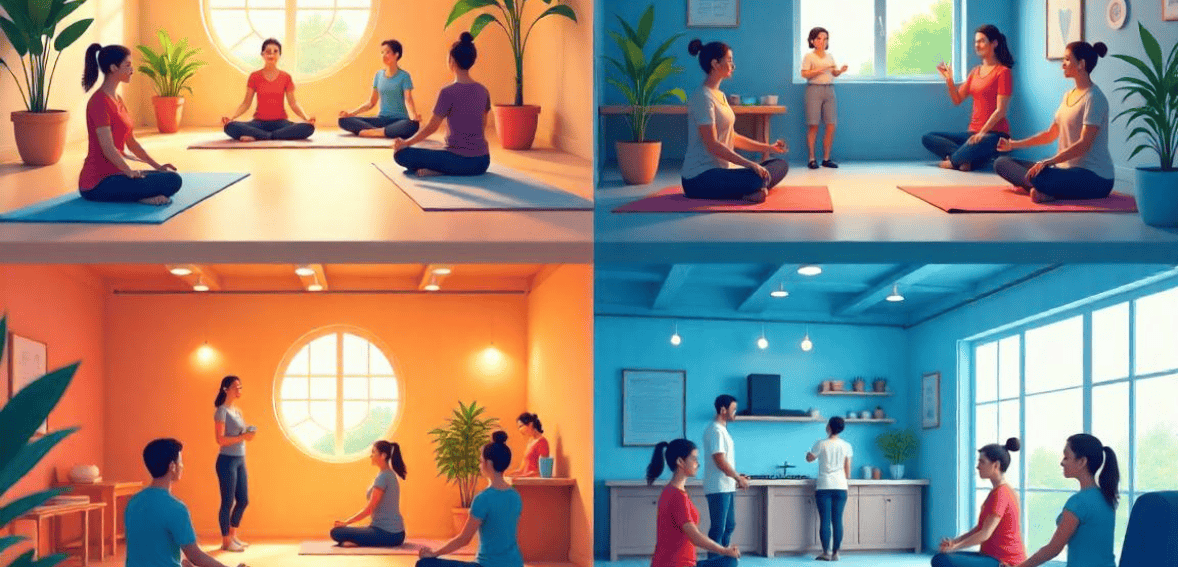
To transform your facility into a comprehensive wellness hub, you must broaden the scope of your services. Here are some service areas to consider:
1. Mind-Body Classes
Offer a variety of classes that cater to different skill levels. In addition to traditional yoga classes, consider power yoga, restorative yoga, and even fusion classes that combine yoga with strength training.
Also, host regular sessions that guide members through meditation practices. Workshops on mindfulness can teach valuable techniques for managing stress and improving focus, appealing to both busy professionals and those seeking deeper mental clarity.
2. Nutritional and Lifestyle Guidance
Employ or partner with certified nutritionists who can offer one-on-one consultations. These sessions can provide personalized dietary plans that complement fitness goals.
Offer classes that focus on healthy cooking techniques, meal planning, and understanding food labels. Such initiatives can empower members to make healthier choices in their everyday lives.
3. Recovery and Therapeutic Services
Integrate services such as massage therapy, physiotherapy, and even acupuncture. These services help members recover faster from workouts and manage chronic pain, making them essential components of a holistic wellness plan.
You can also host seminars on topics such as stress management, sleep hygiene, and mental health awareness. Collaborate with local experts or bring in guest speakers to offer fresh perspectives and expert advice.
4. Mental Health Support
Provide access to mental health professionals or certified life coaches who can help members navigate personal challenges and set meaningful goals. Even short workshops on resilience and self-care can make a significant difference.
To transform your facility into a comprehensive wellness hub, you must broaden the scope of your services. For a detailed overview of services offered by leading gyms, refer to this Comprehensive Guide to Services Offered by Top Gyms.
Adding Technology for an Integrated Experience
Digital tools and wearable technologies are increasingly important in the modern wellness landscape. Here are ways to integrate technology into your facility:
1. Mobile Apps and Online Portals
Develop or adopt an app that allows members to track workouts, schedule classes, and even log their nutrition and mood. Such tools provide valuable data that members can use to monitor progress and stay motivated.
Through these platforms, offer a seamless digital experience where members can easily book classes or consultations. Additionally, consider providing virtual classes or workshops for those who prefer to engage remotely.
2. Data-Driven Personalization
Encourage members to use wearable devices that sync with your system. This integration can provide a comprehensive picture of a member’s activity levels, sleep patterns, and overall progress, allowing for more tailored advice and programming.
Implement digital surveys and feedback tools that let you continuously gather insights from members. Use this data to refine services, schedule popular classes, and adjust offerings in real time.
Building a Community-Focused Environment
A key differentiator for any wellness hub is the sense of community it creates. To foster a connected and supportive environment, consider implementing member engagement programs and forming strategic partnerships. Hosting social events and workshops, such as community brunches, health fairs, and wellness retreats, allows members to connect beyond fitness activities, reinforcing their commitment to a healthy lifestyle. Facilitating peer support groups enables members to share experiences, challenges, and successes, enhancing accountability and building a cohesive community.
Collaborating with local businesses, like organic food stores, spas, and health practitioners, can lead to cross-promotional events, bundled service offerings, and community health challenges. Additionally, inviting experts to conduct specialized workshops on topics such as mental health and advanced nutrition enriches your services and establishes your facility as a credible community resource.
Operational Considerations: Staffing, Training, and Pricing

A successful transformation into a wellness hub is not just about adding services—it also requires operational excellence. Here are some key factors to consider:
1. Staff Training and Development
Encourage your current staff to participate in wellness and mental health workshops. Cross-training can help them understand the holistic approach, making them better ambassadors for your new vision.
Consider expanding your team by hiring professionals in nutrition, mental health, and therapeutic services. Their expertise will be invaluable in delivering quality programming and personalized care.
2. Pricing and Membership Models
Develop tiered membership options that allow members to choose a package that suits their needs. For example, a basic fitness membership could be complemented by a premium package that includes access to nutritional advice, mindfulness sessions, and recovery services.
Offer bundled services that incentivize members to try multiple aspects of your wellness hub. For example, a “Holistic Health Package” might include unlimited fitness classes, monthly nutrition consultations, and periodic massage therapy sessions at a discounted rate.
3. Operational Efficiency
Implement a robust booking system that accommodates multiple service offerings. A unified scheduling platform can help prevent overlaps and ensure that classes and consultations run smoothly. And regularly review and update your programs based on member feedback and industry trends. This commitment to continuous improvement will help maintain a high standard of service across all aspects of your facility.
Marketing Your New Vision

No matter how innovative your offerings, a wellness hub must communicate its unique value proposition effectively. Here’s how to market your transformation:
1. Rebranding and Messaging
Develop a narrative that reflects your new holistic vision. Use language that resonates with the idea of integrated health, balance, and community. Your messaging should clearly articulate how your facility supports not just physical fitness, but overall well-being.
Consider updating your logo, website, and promotional materials to reflect the new direction. A modern, clean design with natural elements can evoke the sense of calm and rejuvenation that your wellness hub embodies.
2. Digital Marketing Strategies
Utilize social media platforms to share success stories, wellness tips, and behind-the-scenes looks at your facility’s transformation. Engage with your audience through interactive content such as live Q&A sessions, virtual tours, and member testimonials.
Invest in content marketing strategies like blogging, email newsletters, and video tutorials that offer valuable insights into holistic wellness. By providing useful content, you position your facility as an authority in the field and build trust with your audience.
3. Community Outreach
Participate in community events, sponsor local sports teams, or host free wellness workshops in nearby parks. These efforts not only raise your profile but also foster goodwill and a deeper connection with your local community.
Implement a referral program that rewards members for bringing in new clients. Word-of-mouth is a powerful marketing tool, especially when your current members are enthusiastic about the benefits they’re experiencing.
Conclusion
Evolving your fitness center into a holistic wellness hub aligns with the growing demand for comprehensive health solutions. By broadening your services to include mental well-being, nutritional guidance, and community engagement, you create a space that supports all aspects of health. Thoughtful facility design, diverse service offerings, technological integration, and a focus on community can set your center apart in a competitive market. This transformation not only meets the evolving needs of your clientele but also positions your facility as a leader in the wellness industry.

